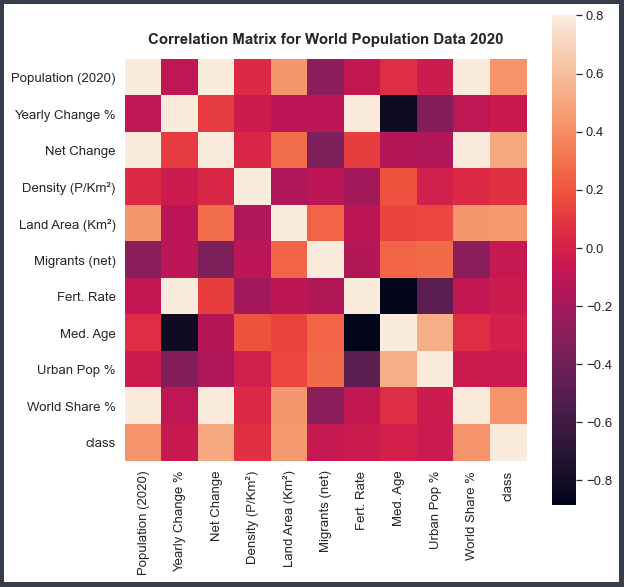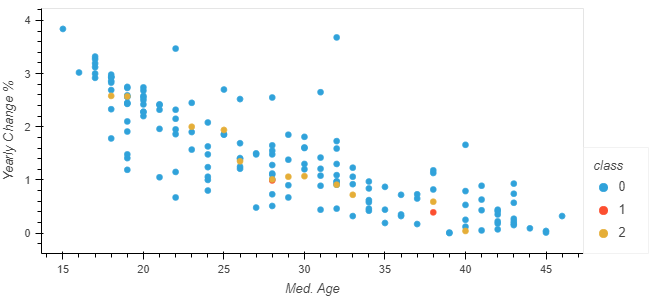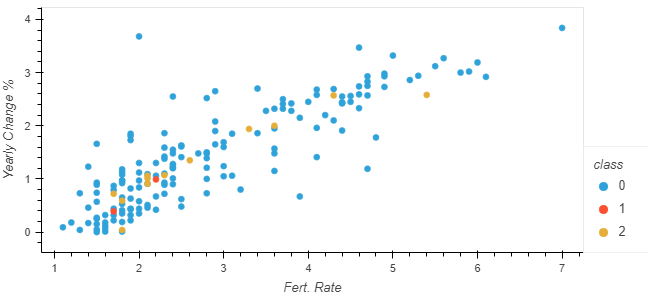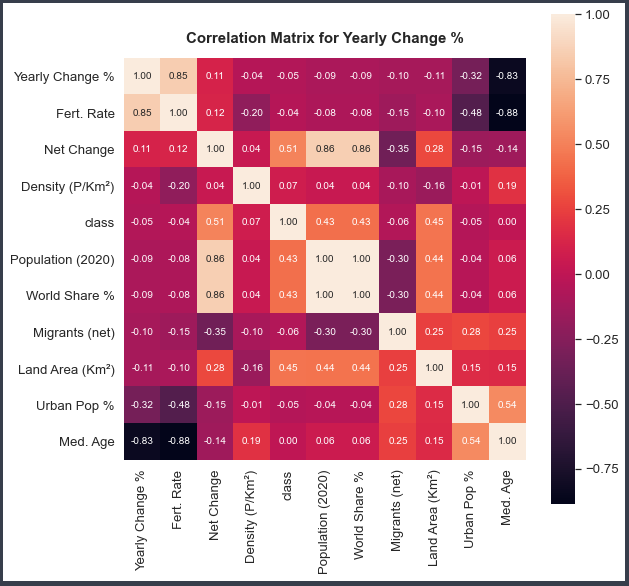World Population
Predicting Yearly Change
Project
Overview
In this project, we are attempting to use 2020 world population data to see what, if any, factors can be used to predict the percentage change in a given country's population from 2019 to 2020.
CHECK IT OUT

Median Age vs Yearly Population Change

Fertility Rate vs Yearly Population Change

Correlating both Fertility Rate and Median Age with Yearly Population Change
Tableau Visualizations

Machine Learning Outcomes




Analysis
Other than median age and fertility rate, there were not any features in the dataset that had a notable relationship with the percentage of growth or decline in a given country from 2019 to 2020. We did find a negative correlation between a higher median age and a smaller percentage change in population growth, as well as a positive correlation between a higher fertility rate and a larger percentage change in growth. These two findings make sense, as it seems likely that a country with a higher fertility rate would have more young citizens and thus a lower median age. These data are perhaps not surprising.
There is, however, a caveat. 2020 was the year that the COVID-19 pandemic erupted worldwide. This affected many aspects of people’s lives across the globe, including plenty of the features shown in our dataset. This makes 2020 an outlier year in many factors and, on its own, may appear a strange period to analyze. However, used in relation to years where population data conforms more to the mean, this single year could be an interesting point of comparison.